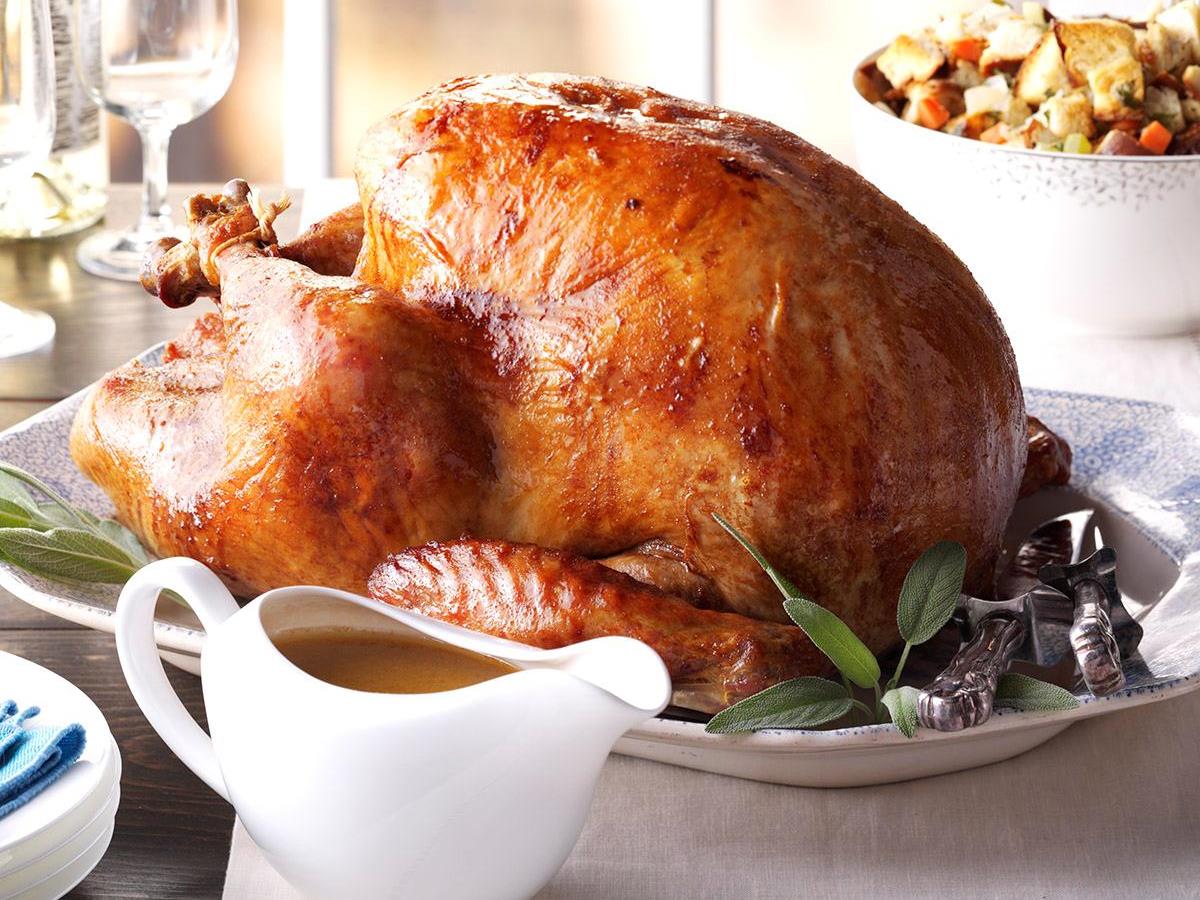Tips for Perfecting Your Thanksgiving Turkey
Despite its foggy history (it is unclear whether or not the original harvest feast contained the meat), the signature turkey is an essential centerpiece for Thanksgiving festivities. In 1621, when William Bradford—one of the first pilgrims to land in Plymouth on the Mayflower—wrote about the colonists’ tendencies to hunt wild turkeys in the fall, the meal gained its prominence. However, it was officially adopted as a Thanksgiving staple once President Abraham Lincoln declared Thanksgiving a national holiday in 1863. Benjamin Franklin justified turkey’s significance due to its uniqueness to North America; he also believed it was a more “respectable bird” than the Bald Eagle, therefore fitting for Thanksgiving festivities. Consequently, the November holiday is now synonymous with “Turkey Day” in honor of the meal that has served families at the dinner table for centuries. Below, professional chefs share their secrets to perfecting a Thanksgiving turkey that would even make the pilgrims proud.
When purchasing a turkey at the market, read the label that shows the information of its injected solution. “You want the turkey with the lowest injected solution number,” explains Logan Guleff, winner of MasterChef Junior Season 2. “Some solutions can be as much as 20% of the turkey’s weight! That means that a 20-pound turkey may have four pounds of fluid!”
Remember to always wash a frozen turkey. “Remove the paper bag with the organs from the turkey because they leave a really bad taste when left in the bird,” Guleff asserts.
Brine your turkey the night before you cook it. “Brining your turkey helps infuse the meat with seasoning, break down tough parts of the meat to allow for a tender turkey, and add moisture to the turkey,” says Jasmine Stewart, winner of MasterChef Junior Season 5. To brine your turkey, Stewart advises adding 1 gallon of water to a large container; equal parts salt and sugar (about ½ cup each); thyme, mint, rosemary, and bay leaves (about 3-5 sprigs each); 1 ½ tablespoons of peppercorns; 1 whole white onion cut into thick chunks; and 1 whole head of garlic. “Stir this mixture, add the turkey, put the container in the refrigerator and let it sit overnight so that the turkey is ready to cook in the morning,” says Stewart. Looking to take your turkey brine to the next level? Guleff produces a white wine brine that turns the bird “perfectly pink.” (*The white wine turkey brine recipe is included at the bottom of the article.)
Season under the turkey’s skin and on the inside of the turkey cavity. “Most people only season the top of the turkey’s skin and miss the opportunity to add flavor to the entire turkey,” Stewart asserts. To achieve a turkey packed with flavor in every bite, the seasoning must be inserted into the smallest, most-hidden areas of the meat. “To season under the skin, lift it up, get a scoop of your seasoning in your hand, and massage the seasoning into the turkey using your hands,” Stewart advises. “To season the inside of the turkey, using either your hands or a pastry brush, spread the seasoning everywhere on the inside of the cavity.” For extra flavor, the chef recommends adding in lemon or other citrus into the cavity as well.
To moisten the turkey, place butter under the skin. “Before roasting the turkey, I always stuff it with butter chunks and a few fresh herbs,” Guleff declares.
Pay careful attention to the cooking time. “Cook it at 500 degrees Fahrenheit for the first 20 minutes, then lower the temperature to 350 degrees and cook it until the thermometer says 161 degrees,” says Seth Garza, winner of Chopped Junior Season 8, Episode 1.
To prevent a dry turkey, baste it while it’s in the oven. “I typically use a big spoon and scoop the turkey’s juices back on top of the turkey, on the inside of the turkey, and everywhere else on it,” says Stewart. “I baste the turkey four times, every quarter while it's cooking, and I typically set a timer to remind me to baste it.” If your turkey doesn’t have enough natural juices, Stewart recommends using chicken or vegetable stock in place of the turkey’s natural liquids to ensure it cooks moist and is ready to serve once removed from the oven.
*White Wine Turkey Brine
Ingredients (soaks one turkey):
1 large bottle Chardonnay
1 large bottle Pinot Grigio
1 bulb fennel, sliced
2 sliced lemons
3 shallots, sliced
1 orange, sliced
1 package rosemary, crushed
1 package thyme, crushed
1 package poultry herb blend, crushed
4 cloves garlic, sliced
3 tablespoons ground black pepper
1 cup salt
1 cup sugar
Directions:
In a large, 5-gallon bucket, add water or white wine. Mix in all the salt and sugar, and stir.
Put in all the herbs and citrus.
Add the cleaned and washed turkey. If the liquid has not covered the turkey, pour either ice water or another 2 bottles of wine into the bucket until the turkey is completely covered. The more wine, the stronger the flavor. The more water, the less flavor. It should smell sweet herbed and fresh.
Let the turkey stand for 6-16 hours (chilled) in a cold storage location.
To cook, remove the turkey, dry it off, and discard the brine (it can not be used!).
Season the turkey with salt and pepper, add some butter under the skin, and roast low and slow.




